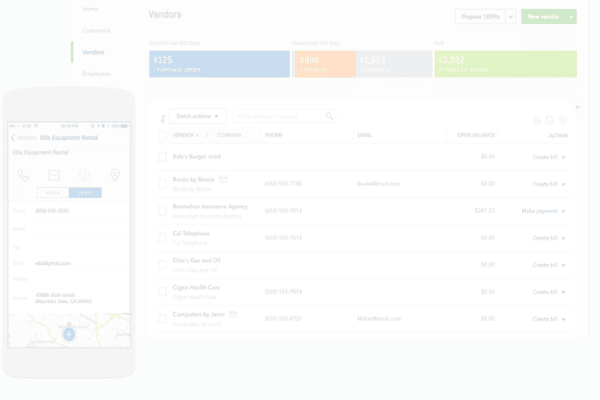5 Mistakes to Avoid When Choosing the Best Procurement Tool

Because the right procurement tool can make or break a company in today’s ever-evolving business world, ensuring that you choose correctly is more important now than it has been before. But the way of selecting that right solution may be a minefield . In this article you look at five frequent mistakes organizations make when choosing a procurement tool and the ways to prevent them. Knowing about these missteps can help businesses in taking better decisions that later on, results in enhanced proficiency and cost savings as well as good relationships with suppliers. It discusses the tool ecosystem in a way that is perspective to users, whether you be an SME or large enterprise looking for procurement tools and concludes with insights on how best to lean into this for strategic advantage based upon your specific needs.
1. Overlooking Your Specific Business Needs
Not reviewing your key business requirements is one of the biggest mistakes companies make while choosing a procurement tool is that they do not evaluate their important and fundamental business needs. You can be tempted by shiny features or popular brands, but without a real understanding of what your organization needs – you may end up with something either small-scale (not covering all requirements) or over-engineered.
Start by doing a careful reflection on your current procurement process to prevent this mistake. Find Problems, Bottlenecks, and Room for Improvement Being able to pinpoint what is going wrong in your business goes a long way towards fixing these problems. Thus, assess the size of your organization in terms of volume; transactions handled, complexities involved with processes and supply chains, whether all specialized industries need to be fulfilled or not. This evaluation will provide you with a complete understanding of what type of procurement tool that you require.
2. Ignoring User Experience and Adoption Challenges
Underestimating the value of user experience and the difficulty in adoption is another error largely repeated. If your team can’t or won’t use a procurement tool, then even the best solution on earth will be useless. If a tool is difficult to figure out – or, worse yet, if it causes problems because people using the software did not know how they should be utilizing this new functionality; that will just frustrate your team and make them less productive.
When reviewing procurement tools, be sure to look at the UI and workflow for purchasing. This leads to working with solutions that are easy, intuitive and require minimal training. Evaluate the variety of users expected to use this tool ranging from procurement people, occasional users from other dept. This solution needs to address the full spectrum of technical proficiency among users.
3. Neglecting Scalability and Future Growth
This can turn into an oversight that results in using a solution which is obsolete within six months or demands expensive upgrades or replacements as the business scales out.
When you select a procurement tool, make sure that it solves for more than just what’s in front of you – take the time to think about your broader business strategy. Can the tool manage an increased volume of transactions as your business scales? Is it capable of onboarding new suppliers, more users or complexities in your procurement process? Find Something that Scales with You – As your needs change, seek a solution flexible enough to meet those new realities.
Review the vendor’s history of innovation and product evolution Any service provider that continuously refines and upgrades its product, being ahead of the curve in industry trends will probably be better equipped to meet your future requirements. No one can tell the future, but using a forward-thinking vendor with scalable solutions should help prevent you from running into service limitations further down the line.
4. Underestimating the Importance of Integration Capabilities
One of the biggest mistakes that many organizations make is they forget to check upon how convenient a procurement tool can be integrated. Because in today’s globally integrated business world your procurement solution is part of your technology ecosystem, and has to effectively operate with other systems in that comprehensive matrix including financial software packages bagged up by a mega ERP system & supplier on-boarding database. That’s why it’s critical to evaluate tools that support seamless integration, preferably with the help of a data pipeline platform that can automatically sync procurement data with your broader tech stack. Platforms like these simplify real-time data movement, reduce manual errors, and ensure end-to-end visibility across your systems.
Which is why it is important that when you evaluate procurement tools, view their capability for integration at length. Does it easily integrate with your current systems? Pre-built integrations with popular business applications? Custom integration: If a publishing platform is required, how difficult and expensive would it be to build these integrations? In choosing such a tool, you may make data silos more of a problem than they already are due to manual entry on top of disconnected systems – and further waste the automation potential that could be your gains from leveraging procurement solutions in purchasing digitally.
Also think about how the tool can integrate with your supplier systems and marketplaces. Effective communication and data exchange with your suppliers improves procurement processes which in the end results improved collaboration, lowered error rates and faster time to transaction. Tools with supplier portal, e-invoicing and compatible data formats
5. Disregarding the Total Cost of Ownership
The most common mistake in selecting a procurement tool is to look at it as only costing what you pay up front, and ignore the total cost of ownership (TCO). The cost to implement a solution is rarely the end of the story in terms of financial expenses. By not including the full slate of costs, you risk blowing your budget and ultimately paying more in the end.
It is one way for them and it is typical that they consider the licensing / subscription fees but it should not be simply when evaluating the expenses in the procurement tool. These costs include implementation where some of the common sub-sections could be cost related to hardware upgrades, data migration charges, etc. and training in another section. Consider ongoing costs like maintenance fees and support charges, plus maybe the need for dedicated IT resources to manage the system.
Conclusion
The fact is that what procurement solution you use, including features like reverse auction capabilities, will have a dramatic impact on the efficiency, cost-effectiveness and overall success of your organization. Avoiding these five common mistakes — overlooking specific business needs, ignoring user experience and adoption challenges, neglecting scale for future growth, underestimating integration capabilities and disregarding TCO — helps you make a more informed strategic choice.


